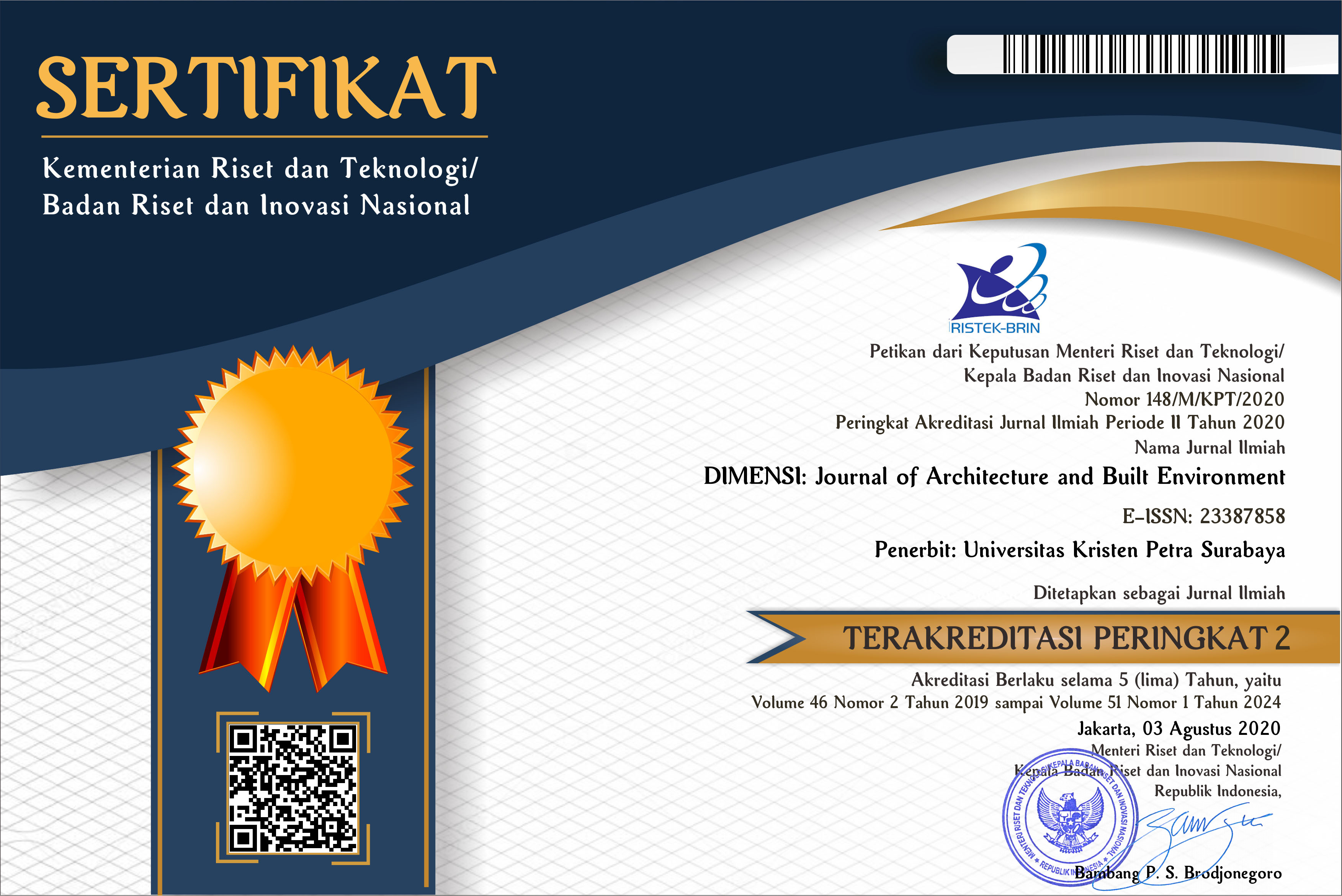KARAKTERISTIK TERMAL PADA UMA LENGGE DI DESA MBAWA NUSA TENGGARA BARAT
 :
:
https://doi.org/10.9744/dimensi.39.1.5-14
Keywords:
Traditional, uma lengge, thermal characteristicAbstract
Local wisdom of Uma Lengge traditional houses were really knowledge developed by local people, obtained through a process of trial & error, as the process to be able adapt the physical environment. Located in Mbawa village, west nusa tenggara province, the building has proven to be able of adapting to the humid tropical climate with an average daily temperature 25oC. However, that potential was not consistent in the field facts that shows the Uma Lengge traditional houses waning existence. This is a separate issue, assessments, tend to raise the extent of the physical characteristics building and has not been touched in terms of scientific study of science building. This paper will examine the Uma Lengge thermal characteristics as scientific input on potential local wisdom. Measurements focused on climate parameters (temperature, humidity, and velocity) for 24 hours in the wet and dry season. The results show that Uma Lengge able to warm the 0.1 ° C in the wet season and able to refrigerate 0.8 °C in the dry season compared with outdoor temperature. This is a hidden potential that ought to be kept preserved.Downloads
Download data is not yet available.
Downloads
How to Cite
I Ketut, S., Desak Putu, D., & Iwan, S. (2013). KARAKTERISTIK TERMAL PADA UMA LENGGE DI DESA MBAWA NUSA TENGGARA BARAT. DIMENSI (Journal of Architecture and Built Environment), 39(1), 5-14. https://doi.org/10.9744/dimensi.39.1.5-14
Issue
Section
Articles
License
Authors who publish with this journal agree to the following terms:
- Authors retain copyright and grant the journal right of first publication with the work simultaneously licensed under a Creative Commons Attribution License that allows others to share the work with an acknowledgement of the work's authorship and initial publication in this journal.
- Authors are able to enter into separate, additional contractual arrangements for the non-exclusive distribution of the journal's published version of the work (e.g., post it to an institutional repository or publish it in a book), with an acknowledgement of its initial publication in this journal.
- Authors are permitted and encouraged to post their work online (e.g., in institutional repositories or on their website) prior to and during the submission process, as it can lead to productive exchanges, as well as earlier and greater citation of published work (See The Effect of Open Access).


















